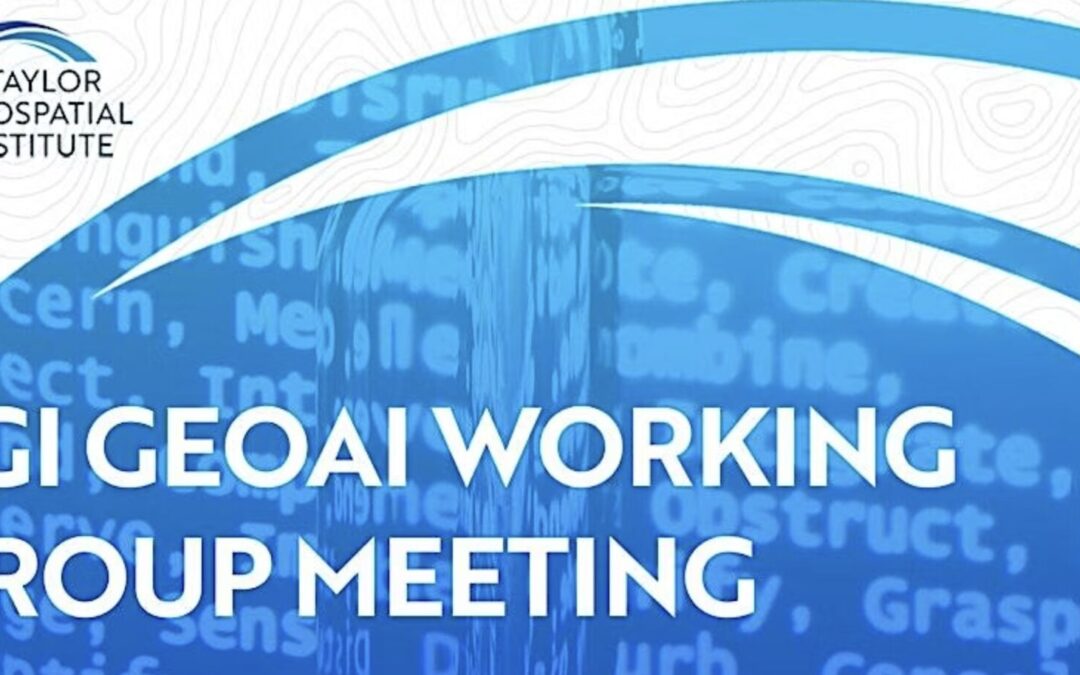News

Turning Insight Into Action: The Next Wave of GeoAI Innovation is Here
What does it take to move from maps to momentum? At the intersection of satellite data, AI, and urgent real-world challenges, a new wave of innovators is answering that question – and transforming how we plan, respond, and act. At the latest session of the TGI GeoAI…
Food Systems Have Complicated Problems. Where Can Geospatial Help?
Every year, around 1.3 billion tons of food – nearly a third of total global food production – goes to waste (FAO). At the same time, 733 million people faced hunger in 2023, with one in five affected in Africa (WHO). It’s a painful paradox: tons of food are thrown away while millions go without.
What If Becomes What’s Next: Inside the TGI-AWS GeoAI Challenge
What if you could stand outside a building and instantly know its emissions profile? What if your smart assistant not only told you what you’re looking at, but also knew where you were standing – and why it mattered? What if old geological records, long buried in PDF…
Recent Articles
Unlocking the Power of AI in Geospatial Technology
Taylor Geospatial Institute (TGI) and Amazon Web Services (AWS) continue to drive innovation through its Generative AI Challenge. On March 6, 2025, TGI hosted its latest GeoAI Working Group meeting, which highlighted yet another round of practical applications of…
How Geospatial Innovation Can Reduce Food Waste and Improve Access to Nutrition
From left: Nishesh Chalise, Dr. Meghan O’Hearn, Dr. Rachel Opitz, Sara Burnett, and Rhiannan Price. Every year, around 1.3 billion tons of food – nearly a third of total global food production – goes to waste (FAO). At the same time, 733 million people faced hunger in…
How Can Geospatial Innovation Promote Sustainable Agricultural Land Management?
From left: Dr. Rachel Opitz, Dr. Steven Singer, Dr. Hamed Alemohammad, and Chad Zimmerman. Despite the world’s agricultural systems producing enough food to feed the current population, global food insecurity remains a critical challenge. The scale of the gap remains…
Joe Cornelius Advocates Geospatial Innovation to Tackle Food Insecurity
As climate change, demographic shifts, and socio-economic instability increase pressure on our food systems, geospatial technologies continue to be critical tools for shaping the future of agriculture. The Taylor Geospatial Institute, through its Geospatial Innovation…
The Future of Geospatial AI is Here – And It’s Just Getting Started
Artificial Intelligence (AI) is no longer on the horizon for geospatial technology – it’s here, transforming how industries operate. From urban planning to disaster response, AI is making geospatial data faster to process, easier to analyze, and more actionable than…
Transforming Agriculture in Latin America with Geospatial Innovation
TGI invited Tomás Peña, Managing Director of The Yield Lab LATAM, to share his thoughts on how the push to improve productivity and sustainability in Latin America’s food and agriculture sector creates new opportunities for geospatial innovators. His talk at the…


